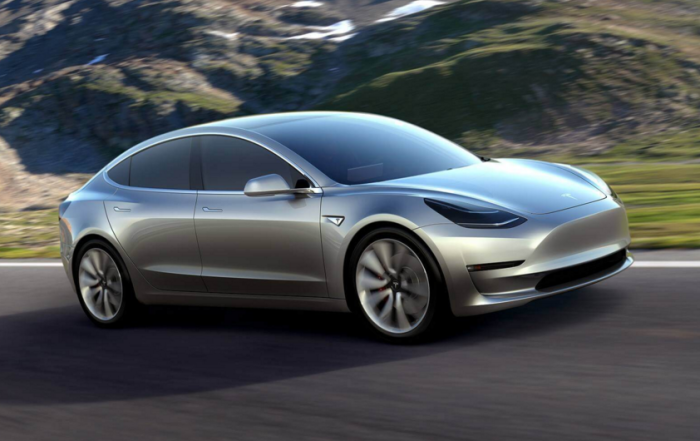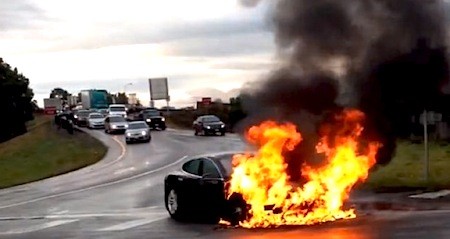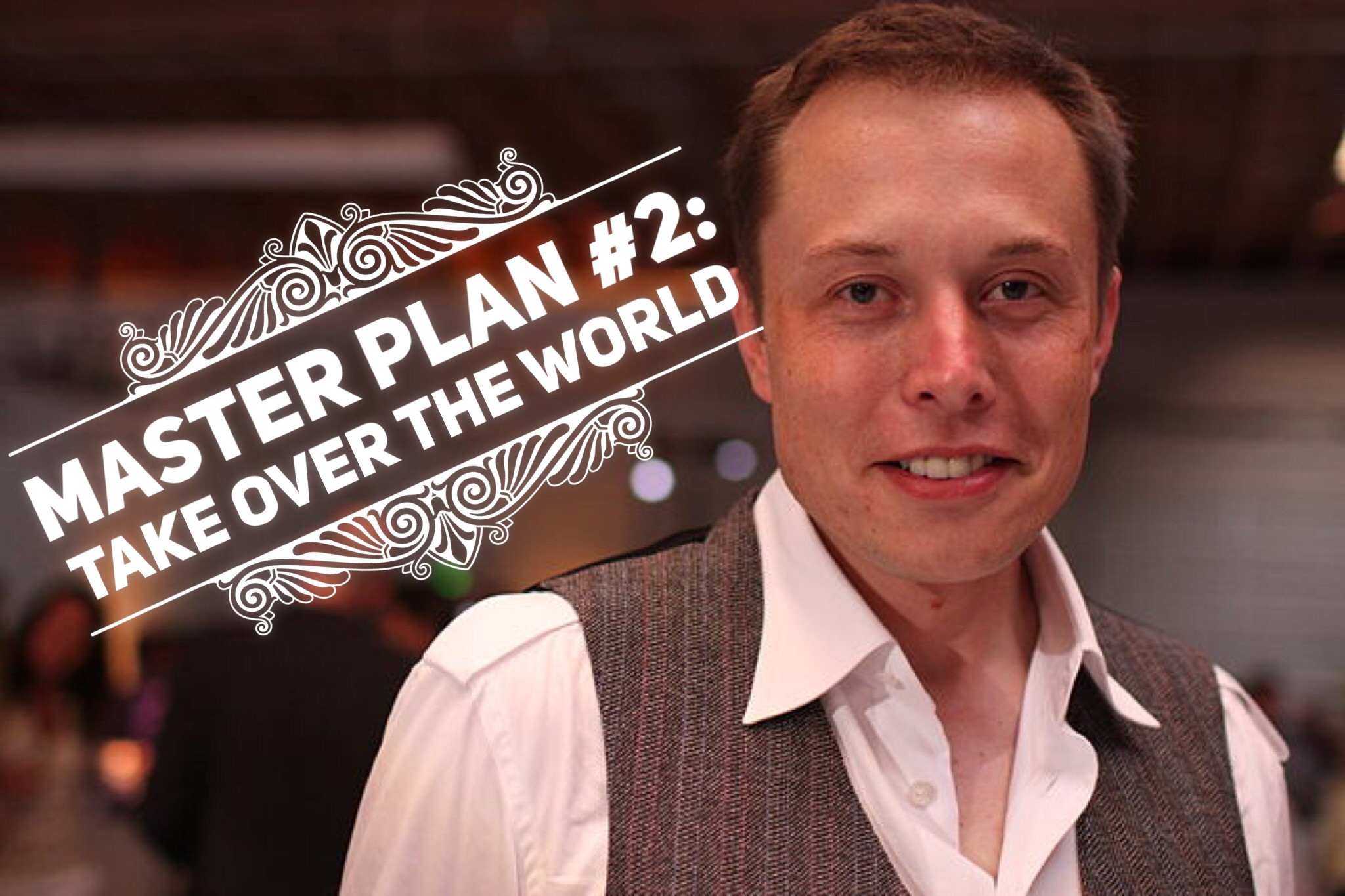Hindsight is 20/20. In Elon Musk’s case, the Master Plan he unveiled 10 years ago shows that he either has the ability to predict the future or is proof that he is a genius that’s way ahead of his time. The big master plan, part one, consisted of the following points:
- Build sports car
- Use that money to build an affordable car
- Use that money to build an even more affordable car
- While doing above, also provide zero emission electric power generation options
To quickly summarize the last ten years: He started out with the very first Tesla which is a roadster built upon the Lotus Elise platform that was capable of a sub five second 0-60 mph time, which was unheard of in something that doesn’t produce copious amounts of fire and smoke. Then he proceeded to produce the Tesla Model S, which we have reviewed and found to be a technological marvel. Since that review, faster and more ludicrous models have come out that has truly challenged the design ethos that a fast car require many cylinders, forced induction, and a large displacement. Next he developed a in-home battery, the Powerwall, that can be used to store electricity from solar panels. Finally, last April he opened up preorders for Tesla’s most affordable car, the Model 3, to the general public. Which the general public generously thanked him to the tune of more than a quarter million preorders in a matter of days. Oh, and let’s not forget the Gigafactory in Nevada that has been built to produce all of these lithium ion batteries at a really low cost.
- Create stunning solar roofs with seamlessly integrated battery storage
- Expand the electric vehicle product line to address all major segments
- Develop a self-driving capability that is 10X safer than manual via massive fleet learning
- Enable your car to make money for you when you aren’t using it
Elon further explains:
Integrate Energy Generation and Storage
Create a smoothly integrated and beautiful solar-roof-with-battery product that just works, empowering the individual as their own utility, and then scale that throughout the world. One ordering experience, one installation, one service contact, one phone app. We can’t do this well if Tesla and SolarCity are different companies, which is why we need to combine and break down the barriers inherent to being separate companies. That they are separate at all, despite similar origins and pursuit of the same overarching goal of sustainable energy, is largely an accident of history. Now that Tesla is ready to scale Powerwall and SolarCity is ready to provide highly differentiated solar, the time has come to bring them together.
Something like this doesn’t sound like a big leap in technology, but it reveals the strategy and Tesla’s desire to corner the energy industry while reducing greenhouse gases. It’s a big and bold plan designed to turn the almost 150 year old electric power generation system on its head. My guess is adoption won’t be as difficult as the electric car adoption as the thought of refunds, tax breaks, and your house generating an income, get dangled in front of consumers.
Expand to Cover the Major Forms of Terrestrial Transport
Today, Tesla addresses two relatively small segments of premium sedans and SUVs. With the Model 3, a future compact SUV and a new kind of pickup truck, we plan to address most of the consumer market. A lower cost vehicle than the Model 3 is unlikely to be necessary, because of the third part of the plan described below.What really matters to accelerate a sustainable future is being able to scale up production volume as quickly as possible. That is why Tesla engineering has transitioned to focus heavily on designing the machine that makes the machine — turning the factory itself into a product. A first principles physics analysis of automotive production suggests that somewhere between a 5 to 10 fold improvement is achievable by version 3 on a roughly 2 year iteration cycle. The first Model 3 factory machine should be thought of as version 0.5, with version 1.0 probably in 2018.
In addition to consumer vehicles, there are two other types of electric vehicle needed: heavy-duty trucks and high passenger-density urban transport. Both are in the early stages of development at Tesla and should be ready for unveiling next year. We believe the Tesla Semi will deliver a substantial reduction in the cost of cargo transport, while increasing safety and making it really fun to operate.
With the advent of autonomy, it will probably make sense to shrink the size of buses and transition the role of bus driver to that of fleet manager. Traffic congestion would improve due to increased passenger areal density by eliminating the center aisle and putting seats where there are currently entryways, and matching acceleration and braking to other vehicles, thus avoiding the inertial impedance to smooth traffic flow of traditional heavy buses. It would also take people all the way to their destination. Fixed summon buttons at existing bus stops would serve those who don’t have a phone. Design accommodates wheelchairs, strollers and bikes.
Now we’re talking, let’s amp up the crazy! Actually, these ideas aren’t so crazy at all given what the Tesla Model S has accomplished. Sure there’s a bunch of bugs that still need to be worked out, whether they’re technology related, unfortunate events, or the result of human error/liars. Every single mile driven is a single mile contributing to the massive autonomy study that can only better the system used for the future. It will be interesting to see people’s opinions and whether they feel comfortable at the thought of transportation companies, both public and private, utilizing autonomous methods to drive over long distances and on public roads.
Autonomy
As the technology matures, all Tesla vehicles will have the hardware necessary to be fully self-driving with fail-operational capability, meaning that any given system in the car could break and your car will still drive itself safely. It is important to emphasize that refinement and validation of the software will take much longer than putting in place the cameras, radar, sonar and computing hardware.Even once the software is highly refined and far better than the average human driver, there will still be a significant time gap, varying widely by jurisdiction, before true self-driving is approved by regulators. We expect that worldwide regulatory approval will require something on the order of 6 billion miles (10 billion km). Current fleet learning is happening at just over 3 million miles (5 million km) per day.
I should add a note here to explain why Tesla is deploying partial autonomy now, rather than waiting until some point in the future. The most important reason is that, when used correctly, it is already significantly safer than a person driving by themselves and it would therefore be morally reprehensible to delay release simply for fear of bad press or some mercantile calculation of legal liability.
According to the recently released 2015 NHTSA report, automotive fatalities increased by 8% to one death every 89 million miles. Autopilot miles will soon exceed twice that number and the system gets better every day. It would no more make sense to disable Tesla’s Autopilot, as some have called for, than it would to disable autopilot in aircraft, after which our system is named.
It is also important to explain why we refer to Autopilot as “beta”. This is not beta software in any normal sense of the word. Every release goes through extensive internal validation before it reaches any customers. It is called beta in order to decrease complacency and indicate that it will continue to improve (Autopilot is always off by default). Once we get to the point where Autopilot is approximately 10 times safer than the US vehicle average, the beta label will be removed.
We all saw where this was going. Full Autonomy will technologically be feasible, and we WILL get there. The major hurdle for Elon Musk is whether the trust of the people be there when the moment arrives. There’s a slew of other issues such as liability, legality, and in some cases morality, as softwares and sensors will surely fail to recreate the human element, despite how you try to classify it.
For automotive enthusiast this bullet point should signal the death of motoring as we currently know and enjoy it. It is easy for us to despair the change in relationship between the man and the machine, as the man is slowly phased out of the process. But let’s not discount the spirit of competition and our innate desire to live on the edge. Motorsports will still surely be a thing and driving as we know it will be different, but Goddammit it’s still going to be fun!
Sharing
When true self-driving is approved by regulators, it will mean that you will be able to summon your Tesla from pretty much anywhere. Once it picks you up, you will be able to sleep, read or do anything else enroute to your destination.You will also be able to add your car to the Tesla shared fleet just by tapping a button on the Tesla phone app and have it generate income for you while you’re at work or on vacation, significantly offsetting and at times potentially exceeding the monthly loan or lease cost. This dramatically lowers the true cost of ownership to the point where almost anyone could own a Tesla. Since most cars are only in use by their owner for 5% to 10% of the day, the fundamental economic utility of a true self-driving car is likely to be several times that of a car which is not.
In cities where demand exceeds the supply of customer-owned cars, Tesla will operate its own fleet, ensuring you can always hail a ride from us no matter where you are.
Once those other goals are met the last point is relatively a minor stepping stone. Just like how Uber threatened the Taxi business, the Tesla ride-sharing model morphs the idea of transportation entirely. It’s no longer just car ownership, it’s an investment.
It’s easy and fun to call him an evil mastermind given his James Bond Villain riches and Tony Stark aspirations. It doesn’t help that he calls his plan “The Master Plan, Part Deux.” Regardless, Elon Musk managed to accomplish or at least establish a framework for all of the bullet points he established ten years ago. Now that these new lofty goals have been unveiled maybe it’s a good time to try out whatever he’s smoking.
(Source: Tesla)




Leave a reply